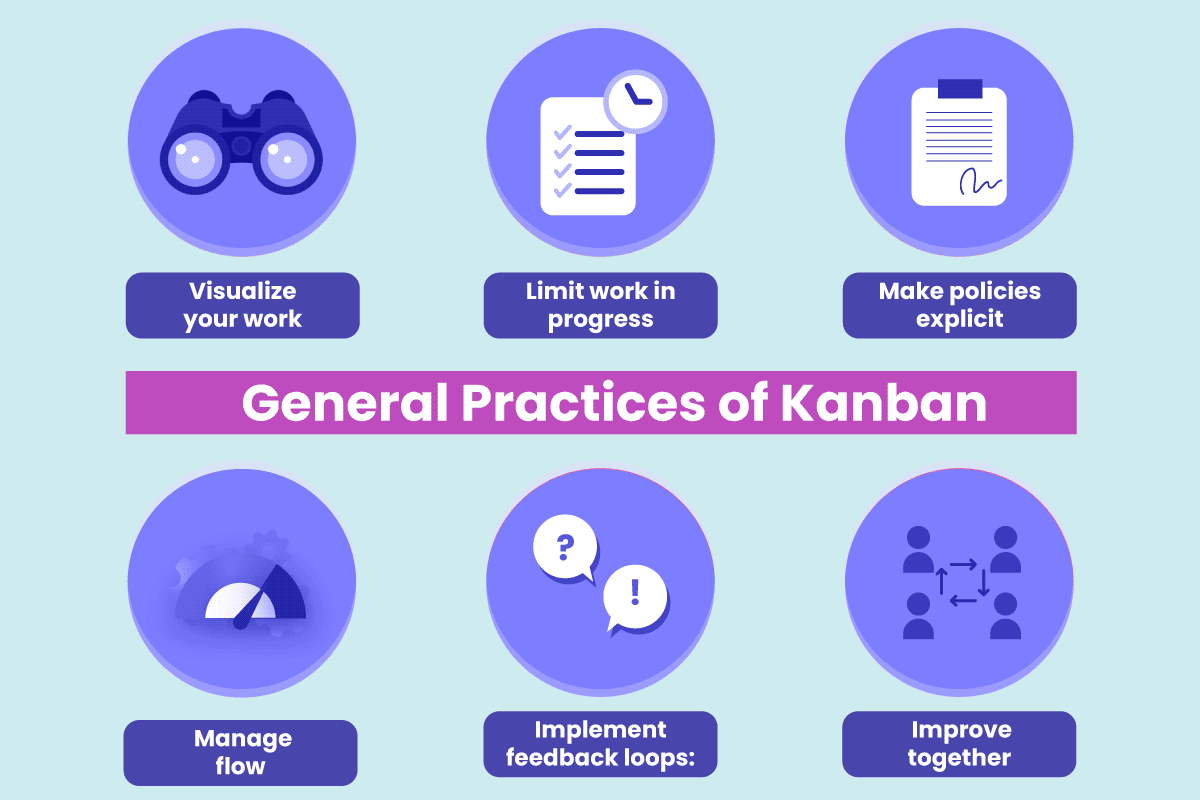As with any topic of work and development, IT projects can be tackled with a wide range of methodologies, some might resort to Scrum as it is the more commonly used, but it certainly is not the only option, and, in some cases, it might not even be the best one. Knowledge is always a critical factor in the way we make decisions. For the choice of what agile methodology is best to implement in any given situation, our best bet is to research and learn about a few different options.
In this case, I will share with you one of the other commonly known methods of handling an agile project, Kanban. You might have heard of it. You might have even used it even if it wasn’t intentional, as the set of tools given is handy. Many agile projects combine other methods with their primary ones. Let’s learn what Kanban is, its core principles and practices, and its primary tool, the Kanban Board.
What is Kanban?
The origin of the term “Kanban” comes from Japanese, which translates to “visual sign” or “signboard.” Toyota first implemented it in its production system. It was later popularized for IT and project management by David J. Anderson, who started applying it at Microsoft and later published “Kanban: Successful Evolutionary Change for Your Technology Business” in 2010.
Kanban is an agile project management style; it revolves around visualizing the different aspects of a project by breaking them down into more straightforward tasks and always having them on the Kanban Board. It is different from Scrum or other agile frameworks because it does not incorporate sprints into the life cycle of a project. Many people like this approach because of the visual aspect, which makes it simpler and, in many cases, very intuitive for people new to Agile development styles.
Kanban Principles and Practices
As with any agile framework, guiding principles and recommendations will allow you to understand the best way to move forward with your project while using Kanban. As mentioned, this methodology has changed over the years, from its origin in manufacturing to the digital era. Since our work will continue to change over the years, here are the most up-to-date principles and practices in 2023.
The Core Principles of Kanban
- Start with what you do now: One of the main selling points of Kanban itself is its non-disruptive nature. You can continue your work without making significant changes from the get-go. Kanban will allow you to discover and recognize any current workflow deficiencies.
- Agree to pursue incremental change: Having taken on the previous principle, an organization will see some areas of opportunity. The goal is to gradually change the structure of how things are being worked on. Continuous improvements should be made on par with the Agile mentality.
- Respect the current processes and roles: Continuing the trend of not creating chaos by sudden changes, the organization should work on a compromise where the previous way of thinking and doing tasks is honored. The team should agree on what improvements are needed and implement the best-suited changes, especially when an organization is large and adapting to change is hard.
- Encourage company-wide leadership: Kanban should allow and inspire team members of all areas to take charge of any issues that could arise by having the proper arguments to back them up. Allow people to pursue greatness and create a safe space where everybody can become a leader for change and growth.
Kanban Best Practices

- Visualize: Most people are familiar with a Kanban Board; many organizations use some variation to represent their workflow visually. In the simplest terms, it is a dashboard with a variable number of columns. Each one is a state in the life cycle of the activities from left to right. The most common would be “To-Do,” “In Progress,” and “Completed.” A card on the board should represent all the activities. Based on how many cards are on any of the stages in the board, you can evaluate the state of the project and even analyze why there might be too many in any given column.
- Limit work in progress: The visual aspect of the board helps control how many activities are currently being worked on. If the team can handle more tasks, pull from “To-Do” but only do it if it has enough resources.
- Manage flow: The project manager must observe how often tasks move through the workflow stages. Are they moving at a good pace? That means the team has good speed and has everything they need to continue their work. On the other hand, are they moving too slowly? That usually means there might be blockers, or the workflow needs adjustments to accelerate the process.
- Make policies explicit: Clear rules and structures for everybody in the organization will ensure clarity and make everything more objective. Document these policies and ensure they are available for everyone on the team.
- Implement feedback loops: Agile frameworks have a critical need for feedback and improvements. Make it a common practice for the team to be able to present their opinions on these topics and apply changes as often as it is necessary. Evolution is part of the process.
- Improve together: Everybody should have a team mentality for collaboration and support, be open to new ideas, experiment, and speak up. All opinions should be heard and considered for the organization's improvement if it has good support.
The Power of Kanban
Kanban might not be the most complex of the Agile methodologies, but its simplicity allows it to be a part of most projects and organizations. Most project managers use some part of the framework in their daily activities to support other methodologies like Scrum. Use the visual tools of Kanban to help your team’s tasks. Maybe you’ll find it a powerful and easy-to-use tool for your future.
Find out how our Project Management team can help you deliver successful projects by contacting IO Connect today.

